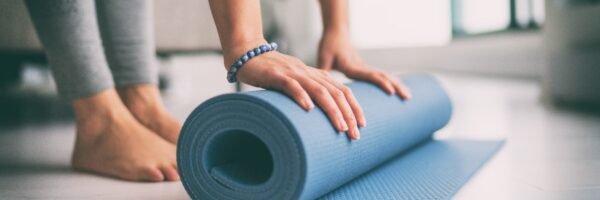Stress is an inevitable part of modern life, but finding effective ways to manage it can profoundly impact our overall well-being. Yoga, an ancient practice that combines physical postures, breathing techniques, and meditation, has become a popular method for reducing stress and enhancing mental clarity. Whether you’re dealing with work pressures, personal challenges, or the daily grind, yoga offers a gentle yet powerful way to unwind. Kevin Morgan of Rochester NY says that for beginners, starting with simple poses can help ease you into the practice while delivering noticeable stress-relief benefits.
The Science Behind Yoga and Stress Relief
Yoga is more than just a physical exercise; it engages the body and mind, fostering a deep sense of relaxation. Scientific studies have shown that yoga can lower levels of cortisol, the stress hormone, and increase the production of endorphins, the body’s natural mood elevators. The focus on breathwork and mindfulness in yoga helps activate the parasympathetic nervous system, which counters the “fight or flight” response associated with stress.
For beginners, the key to reaping these benefits lies in starting with poses that are both accessible and effective at promoting relaxation. Below, we’ll explore several beginner-friendly yoga poses designed to alleviate stress and calm the mind.
Top Yoga Poses for Stress Relief
1. Child’s Pose (Balasana)
Why It Helps: Child’s Pose is a gentle resting posture that helps release tension in the lower back, shoulders, and neck. It provides a safe space to focus on your breath, grounding yourself in the present moment.
How to Do It:
- Kneel on the floor with your big toes touching and your knees apart.
- Sit back on your heels and stretch your arms forward, lowering your torso to the mat.
- Rest your forehead on the mat and breathe deeply.
- Hold the pose for 1–2 minutes.
Pro Tip: If you find it uncomfortable to sit back on your heels, place a cushion or blanket between your thighs and calves for support.
2. Cat-Cow Pose (Marjaryasana-Bitilasana)
Why It Helps: This dynamic flow between two poses stretches the spine and neck while promoting mobility. The rhythmic movement, paired with deep breathing, can help release physical tension and mental stress.
How to Do It:
- Start on your hands and knees in a tabletop position.
- Inhale as you arch your back, lifting your head and tailbone (Cow Pose).
- Exhale as you round your spine, tucking your chin to your chest (Cat Pose).
- Repeat the sequence for 5–10 breaths.
Pro Tip: Synchronize your movements with your breathing to maximize relaxation.
3. Standing Forward Bend (Uttanasana)
Why It Helps: This pose gently stretches the hamstrings, calves, and lower back while encouraging blood flow to the brain. It can help relieve tension and clear your mind.
How to Do It:
- Stand with your feet hip-width apart.
- Hinge at your hips and fold forward, letting your arms dangle or resting your hands on the floor.
- Keep a slight bend in your knees if necessary.
- Hold the pose for 30 seconds to 1 minute while breathing deeply.
Pro Tip: If you can’t reach the floor, rest your hands on a yoga block or your shins.
4. Legs-Up-the-Wall Pose (Viparita Karani)
Why It Helps: This restorative pose is excellent for calming the nervous system and relieving tired legs. It helps reduce blood pressure and encourages relaxation.
How to Do It:
- Sit sideways next to a wall, then lie back as you swing your legs up against the wall.
- Adjust your position so your hips are close to the wall and your legs are straight.
- Rest your arms by your sides with palms facing up.
- Hold for 5–10 minutes.
Pro Tip: Place a folded blanket under your hips for added comfort.
5. Corpse Pose (Savasana)
Why It Helps: Often practiced at the end of a yoga session, Corpse Pose allows your body and mind to fully relax. It’s a time to let go of tension and absorb the benefits of your practice.
How to Do It:
- Lie flat on your back with your legs extended and arms at your sides, palms facing up.
- Close your eyes and focus on your breathing.
- Allow your body to feel heavy and relaxed.
- Stay in the pose for 5–10 minutes.
Pro Tip: Use an eye pillow or blanket for added comfort and to block out distractions.
Tips for Beginners
- Start Small: If you’re new to yoga, aim for short sessions of 10–15 minutes and gradually increase the duration as you become more comfortable.
- Focus on Breathwork: Deep, mindful breathing is a core element of yoga and plays a significant role in stress relief. Concentrate on your breath to stay present during each pose.
- Create a Calm Environment: Practice in a quiet, clutter-free space to enhance the calming effects of yoga. Consider using soft lighting or soothing music.
- Be Patient with Yourself: Yoga is a journey, not a destination. Don’t worry about perfecting each pose—focus on how your body feels and the relaxation it brings.
Yoga offers a holistic approach to managing stress, making it a valuable tool for anyone looking to improve their mental and physical well-being. By starting with beginner-friendly poses like Child’s Pose, Cat-Cow, and Legs-Up-the-Wall, you can ease into the practice while experiencing its profound stress-relief benefits. Remember, consistency is key—regular practice, even for a few minutes a day, can significantly impact your stress levels over time.
So, roll out your mat, take a deep breath, and let yoga guide you toward a calmer, more centered self.
